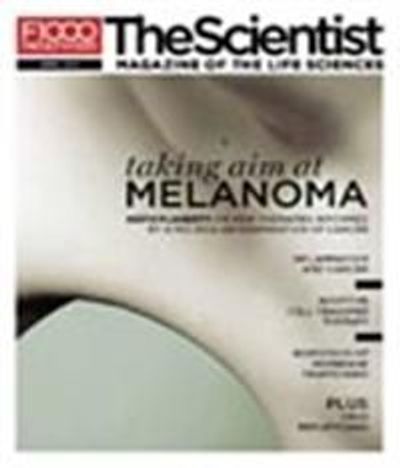Ancient Anatomy, circa 1687
Seventeenth-century Tibet witnessed a blossoming of medical knowledge, with the construction of a monastic medical college and the penning of several influential medical texts. Perhaps most striking was a set of 79 paintings, known as tangkas, which were intended to illustrate a comprehensive four-volume medical treatise called The Blue Beryl. Created between 1687 and 1703, these paintings are vibrant pieces of educational art that interweave practical medical knowledge with Buddhist traditions and Tibetan lore—depicting such things as the use of omens and dreams for making diagnoses, hundreds of medicinal herbs and medical instruments, and diagrams of human anatomy.

The word tangka (or...
Tibetan anatomists counted a total of 360 bones in the human body—significantly more than the 206 bones described in Western medical books. This disparity stems from the fact that Tibetan doctors considered cartilage, as well as fingernails and toenails, to be bones. Other anatomical estimates reveal similar inconsistencies, such as the Tibetan calculation of 21,000 hairs on the human head, while modern medicine estimates that the scalp has an average of 100,000 hair follicles.
The paintings were commissioned by the fifth Dalai Lama’s regent, Desi Sangye Gyatso, who stepped in as interim ruler of Tibet after the Dalai Lama died in 1682. Gyatso placed great value on the accuracy of the illustrations, frequently consulting medical specialists and encouraging the use of fresh corpses as models for the anatomical paintings. But he also left a lot of room for symbolic creativity, as is apparent in the depiction of internal organs such as the stomach (red diamond), the small intestines (red swirls), and the large intestine (blue waves).
 Anatomy of vulnerable points: This tangka depicts the points of the body that are most vulnerable to injury and disease. The figure in the center shows the vulnerable blood vessels, muscles, and bones, while the figures sitting down on either side show the vulnerable internal organs such as the heart, liver, lung, and spleen. |  Medical instruments: A physician’s arsenal includes probes for exploring fractures, open wounds, and genitalia, forceps and tweezers for extracting tissue and foreign objects from the body, surgical instruments such as knives and saws, and other instruments such as those used to alleviate urine retention and inject laxatives. | |
 Tree of diagnosis: In order to make a diagnosis, a Tibetan doctor must observe, feel , and question. These three actions are represented by the three main stems of the tree, which further divide into a total of eight branches and 38 leaves that represent the body parts that should be either observed, felt, or questioned. |  Moxibustion, surgical, and bloodletting points: Moxibustion refers to the practice of burning the mugwort herb (moxa) and applying it to various parts of the body in order to improve circulation and treat chronic diseases. The moxibustion points are indicated by the red dots, the bloodletting points by the blue dots, and the surgical points are in yellow. | |
 Human embryology This tangka illustrates the process of fetal development, starting from the moment of conception (top left corner), which is when the fetus receives consciousness through the father’s semen and breath. |  Herbal medications Plants were a major source of healing in Tibetan medicine. Desi Sangye Gyatso, who commissioned these tangkas, went through great pains to have a wide variety of medicinal plants illustrated with great accuracy, requiring monks to have the specimens at hand when drawing them. | |
 Methods of treatment Change in diet and behavior, as well as the prescription of herbal medicines, moxibustion, and bloodletting are among the treatments for patients suffering from excessive wind, sexual exhaustion, pregnancy-related anemia, insomnia, grief, overwork, and indigestion, among other ailments. |  Medicine Buddha The medicine Buddha, or Bhaishajyaguru, is in the center of Sudarshana—a mountain-perched city lush with forests that are teeming with powerful medicines and remedies. He is surrounded by various deities, among which is the Fifth Dalai Lama (top left corner). |
Interested in reading more?




